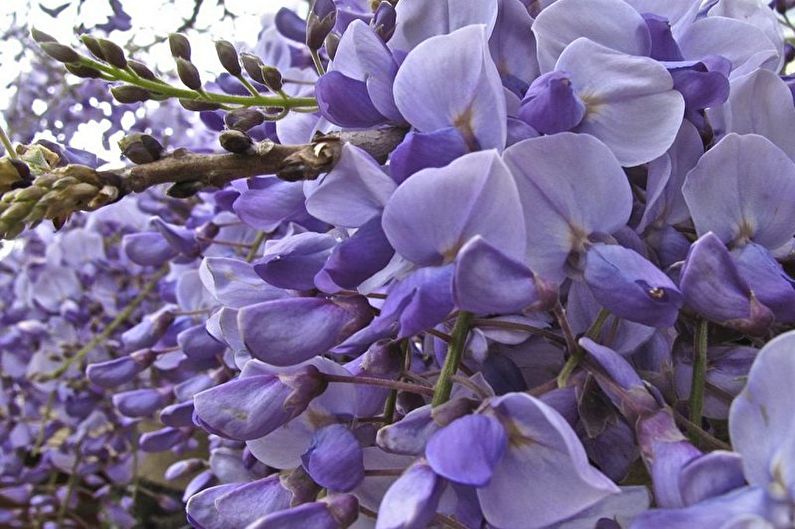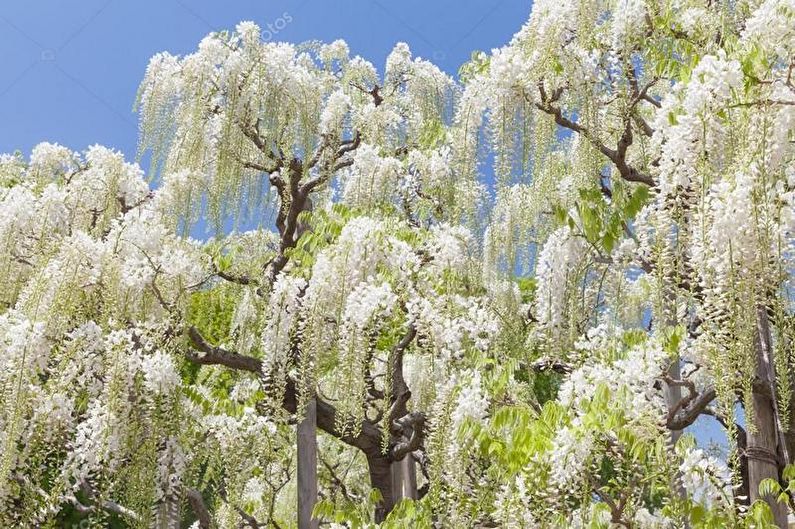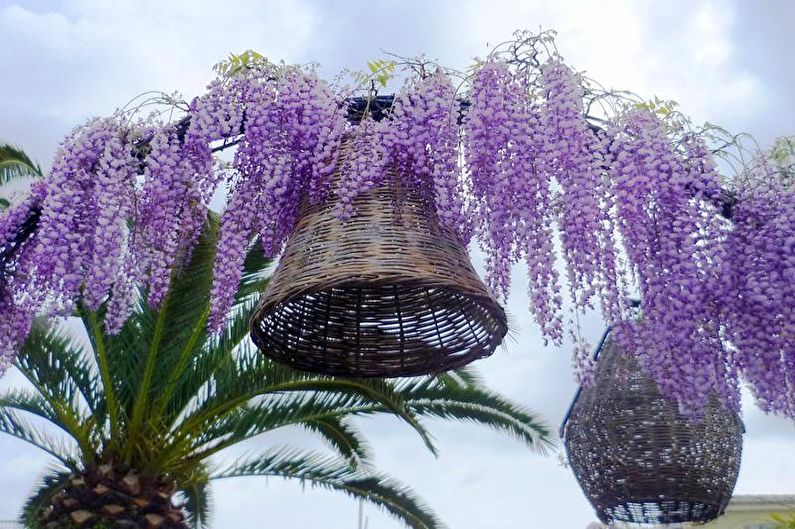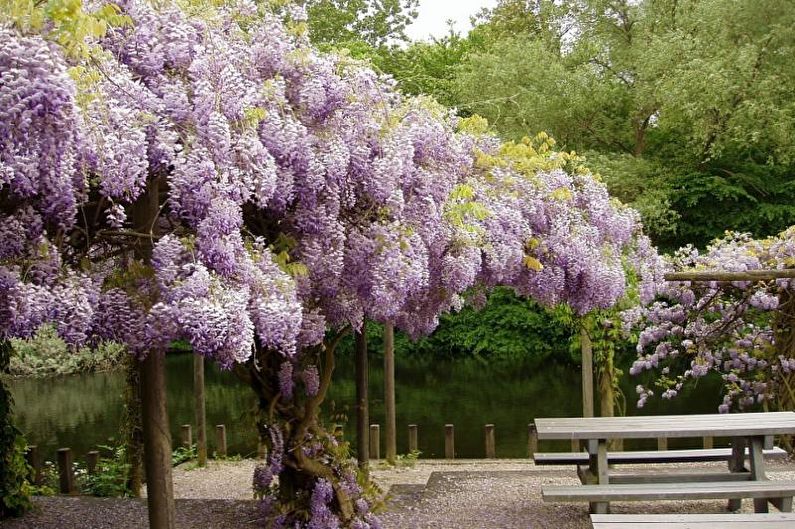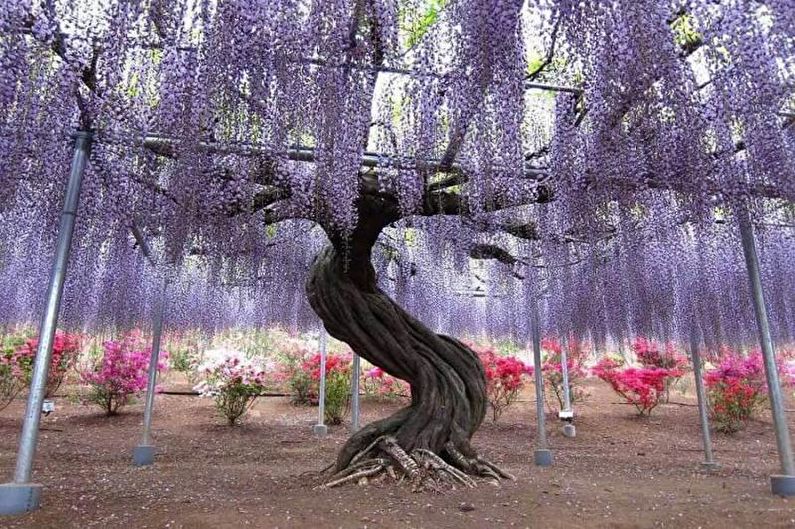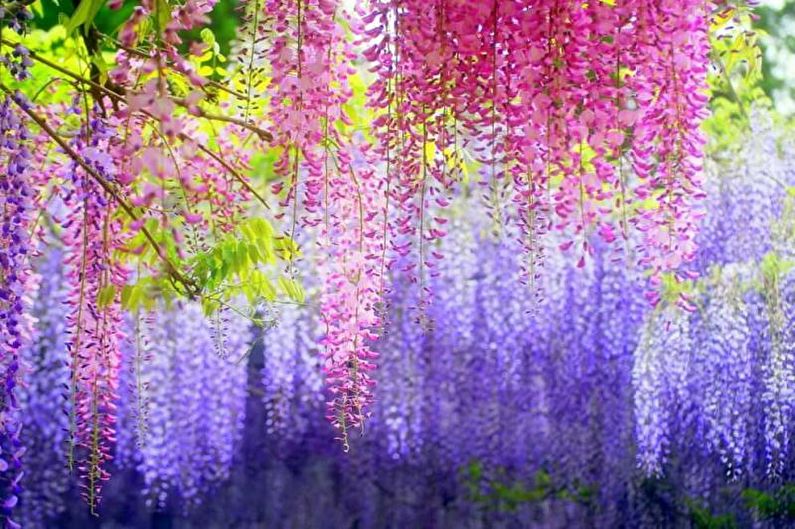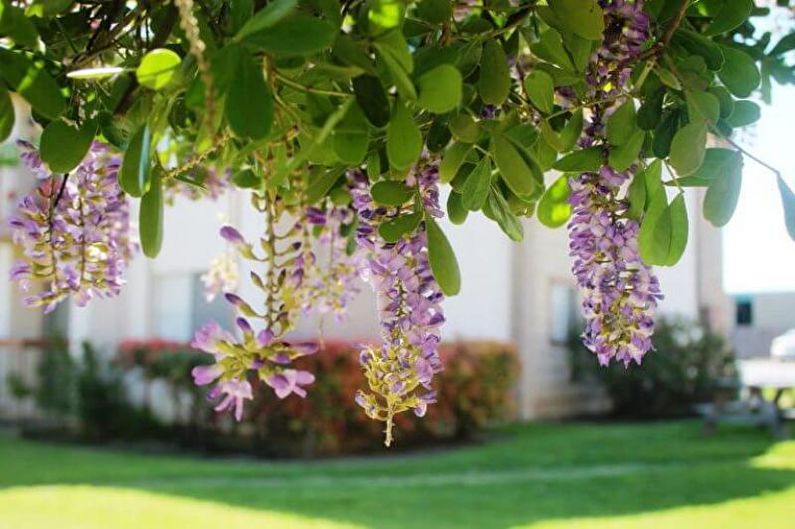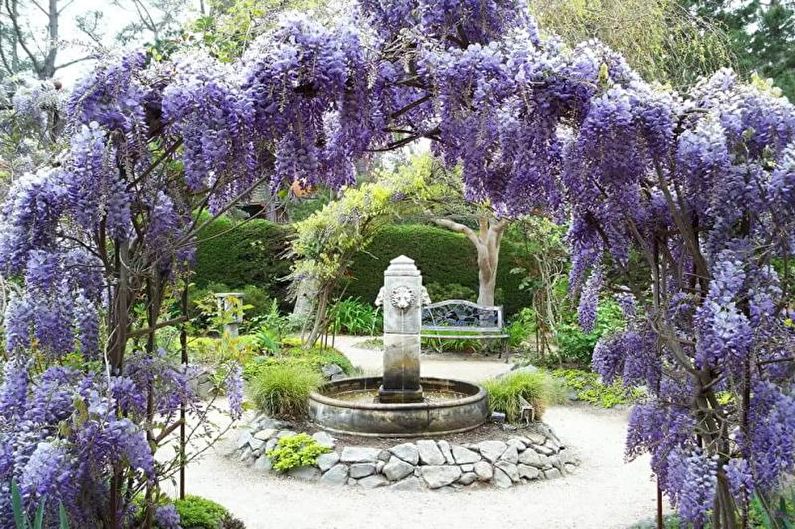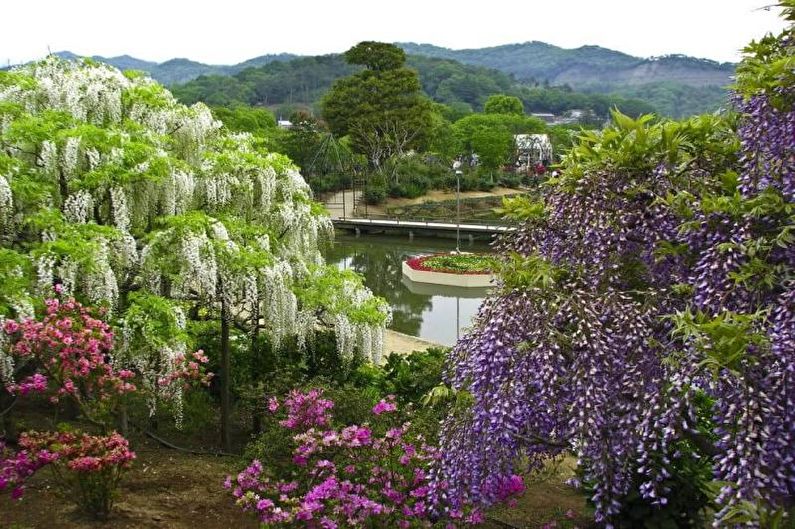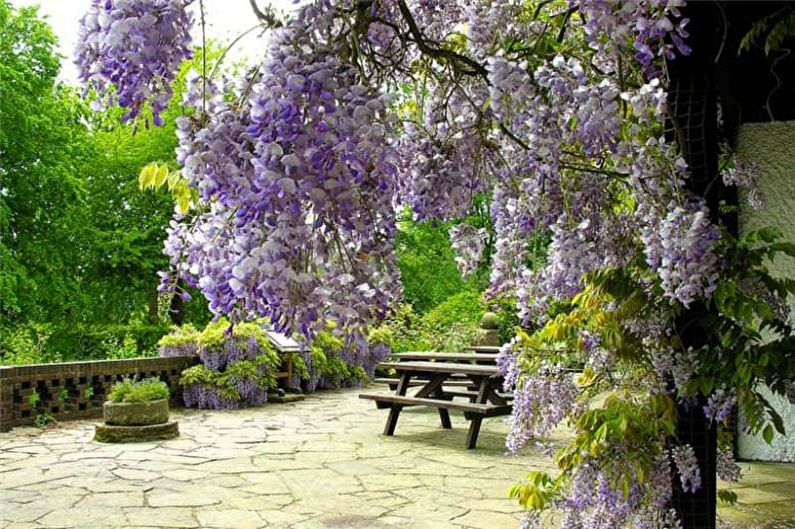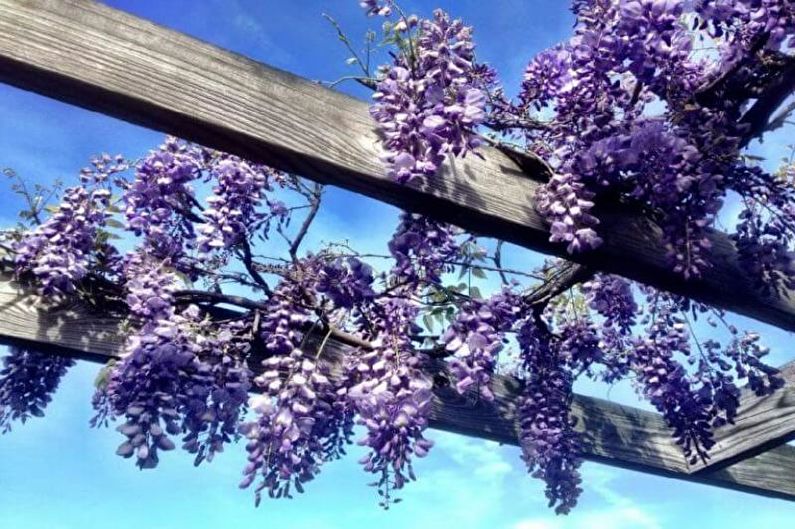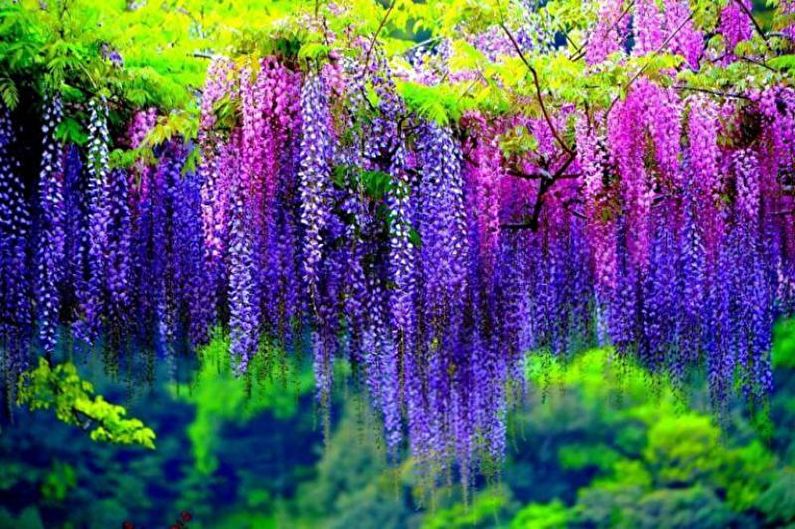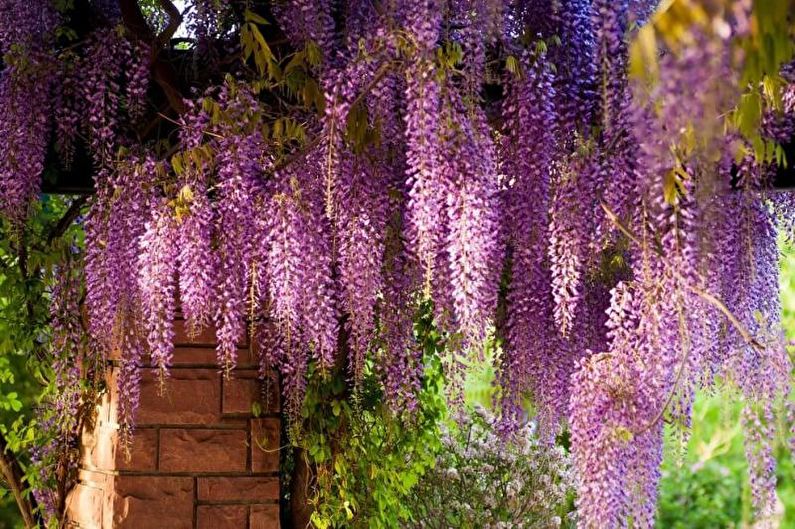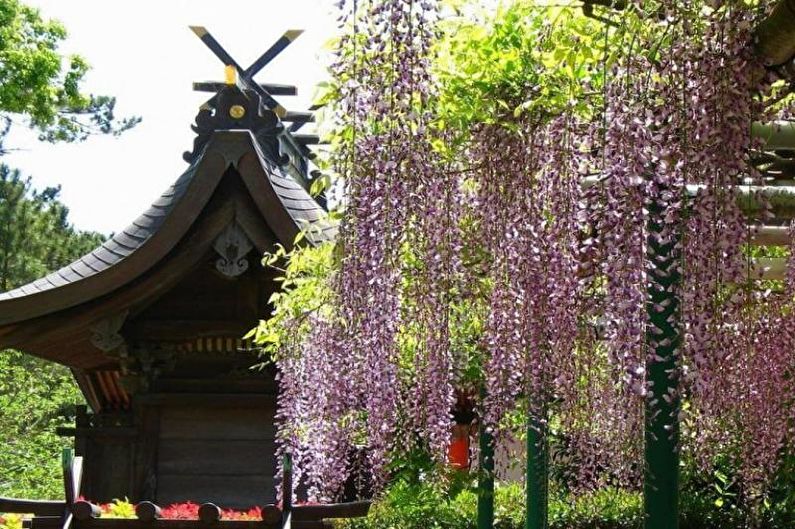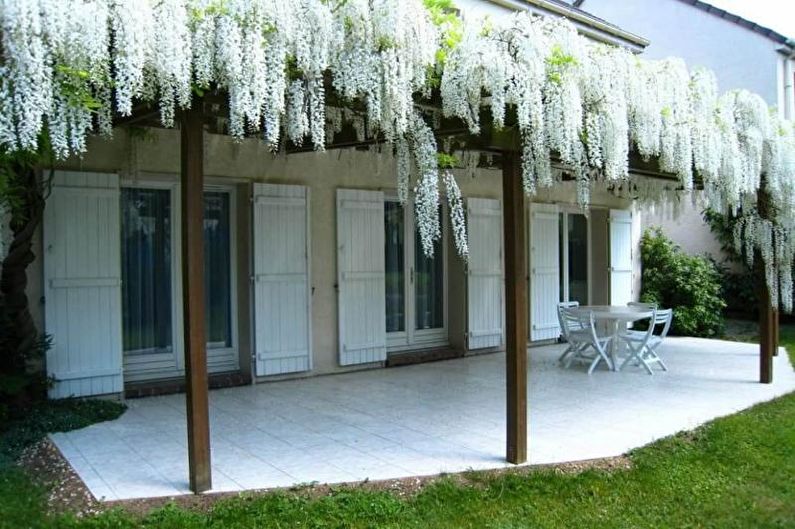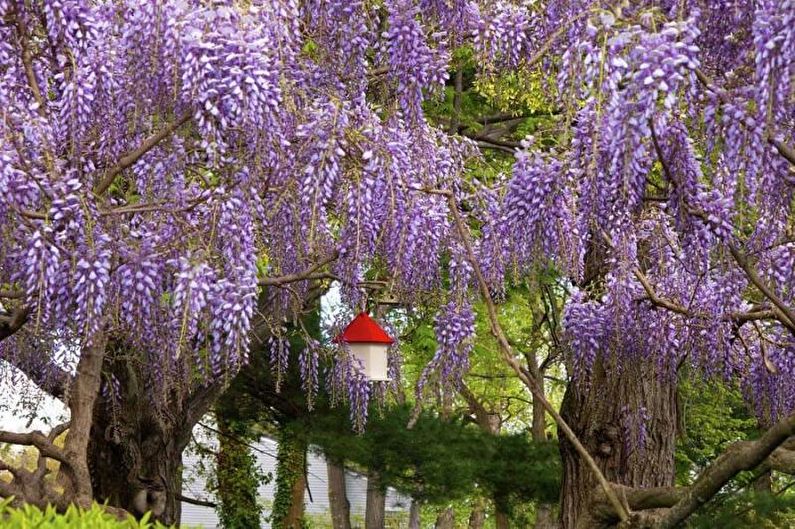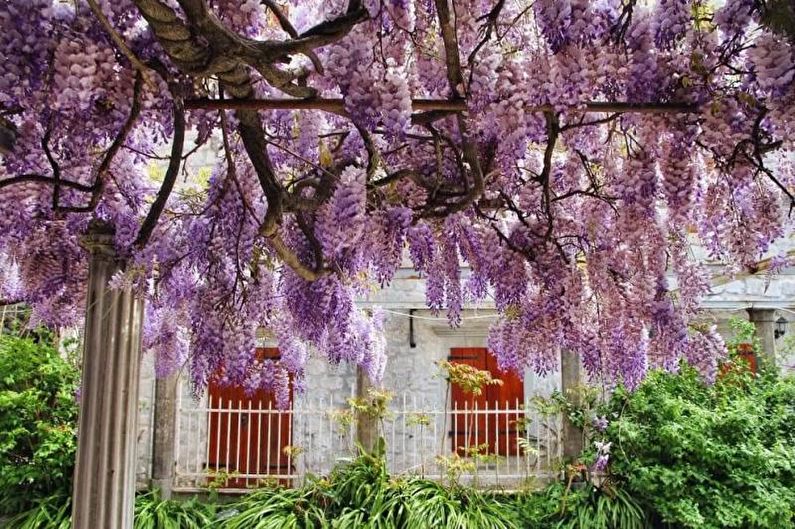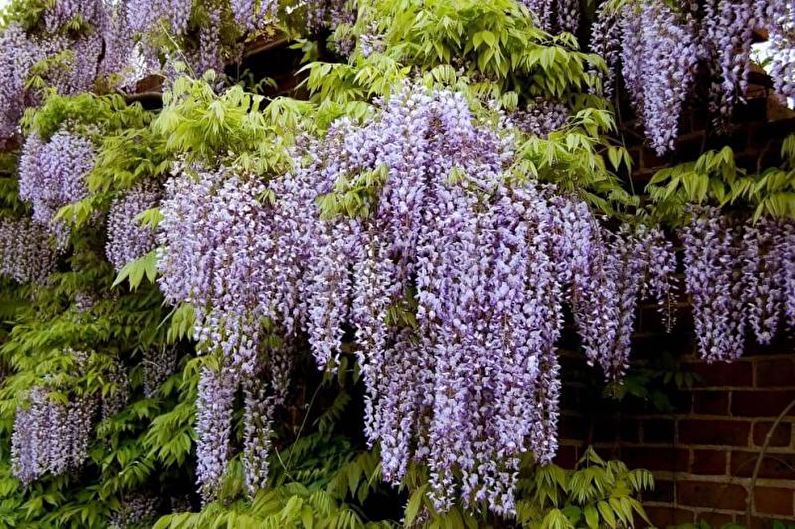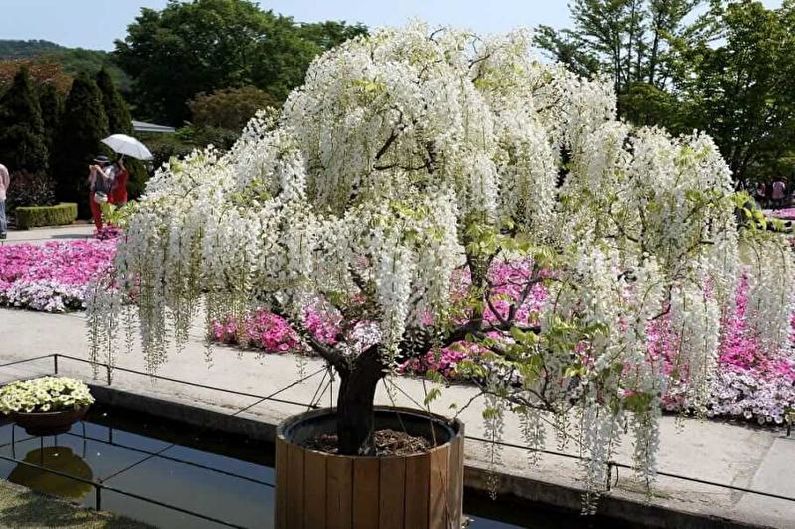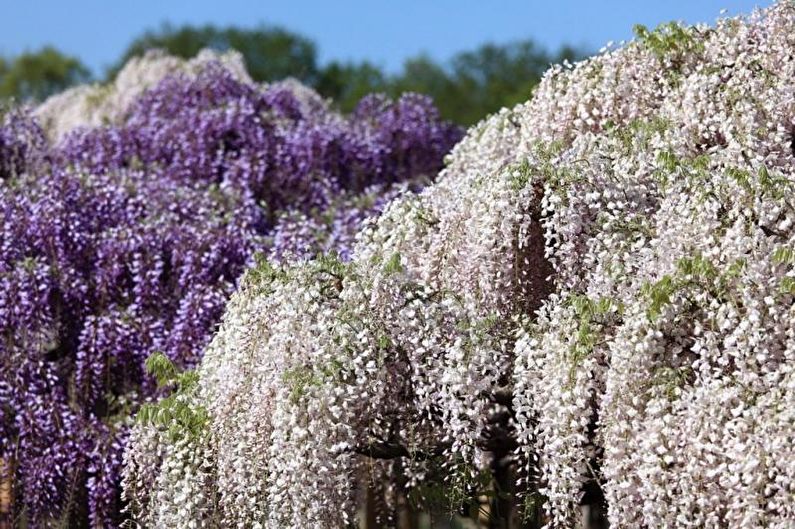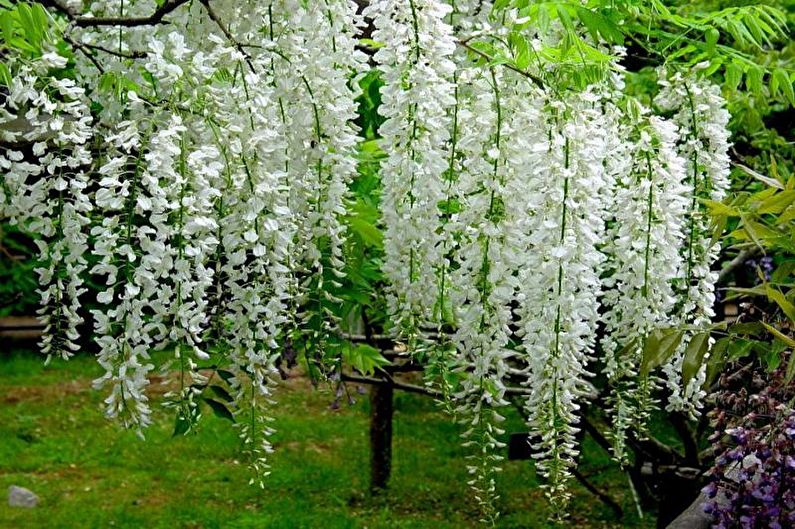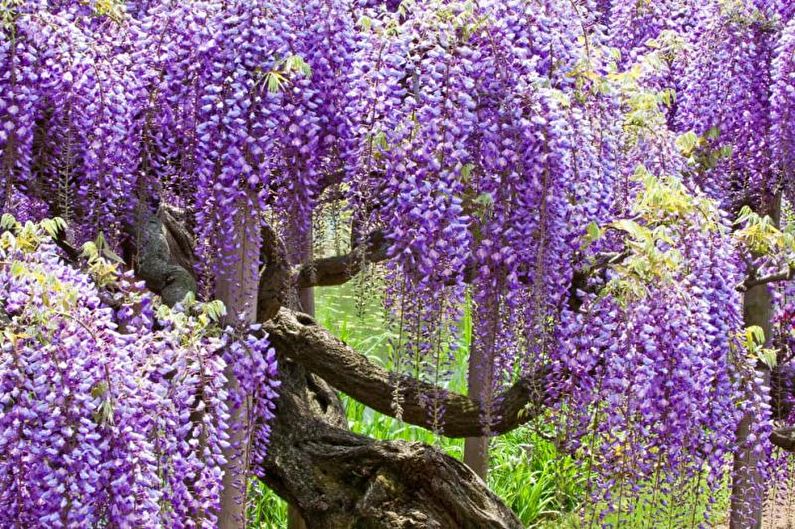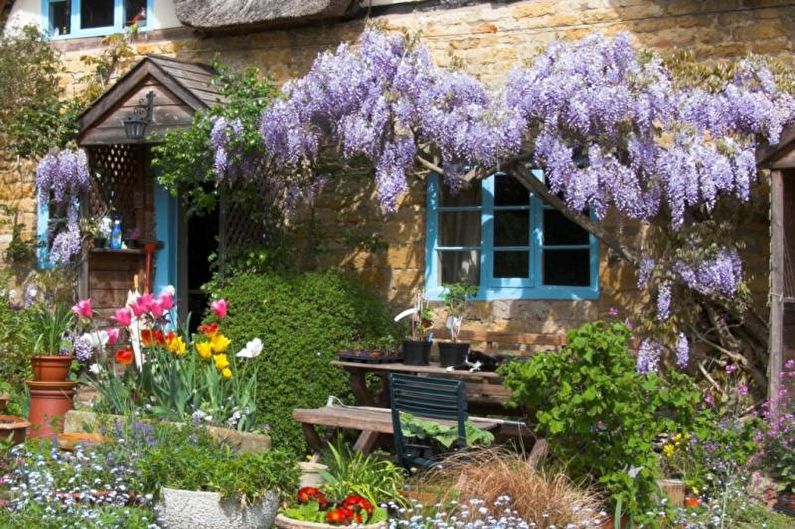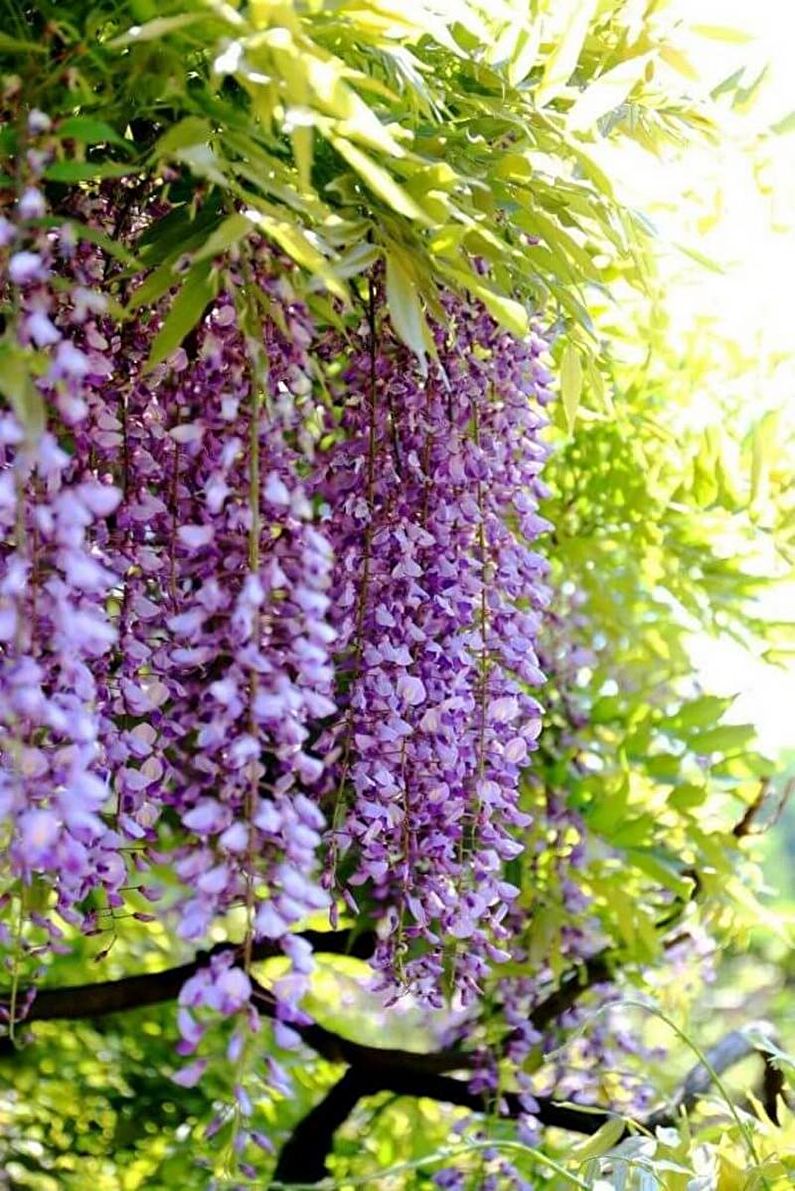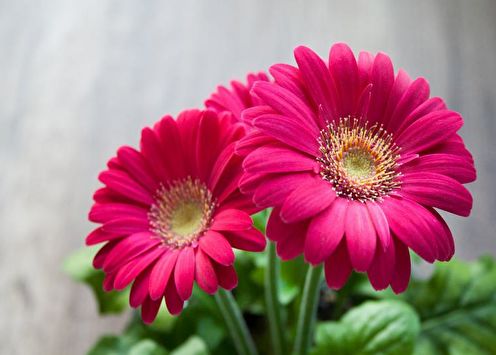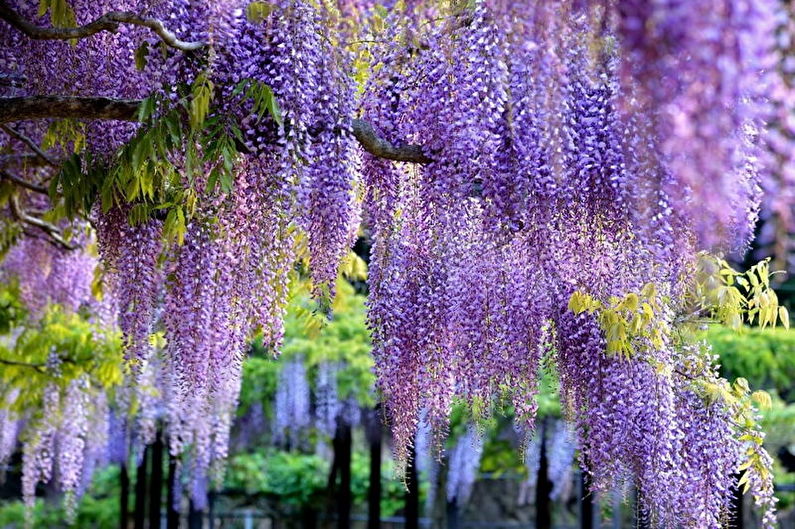
The abundantly flowering wisteria liana (another name is wisteria) is used in landscape design mainly to create a vertical decor. A lush waterfall of lilac, pinkish or white brushes can decorate any corner. Wisteria is ideal for decorating arches, arbors, alleys, it often disguises fences, outbuildings and facades of ancient buildings. During flowering, this liana resembles a luxurious curtain, which creates a cozy shadow and protects from too bright sun. With all its splendor, wisteria is an unpretentious plant, and even novice flower growers will be able to care for it.
general characteristics
In Greek, the word glycos means “sweet” - it is this aroma that exudes blooming wisteria. In appearance and fragrant smell, its clusters resemble acacia, which is not surprising, because both of these plants belong to the legume family.
Representing a perennial vine, wisteria itself can reach up to 20 m in length, and its clusters up to 80 cm. Numerous brushes hanging under their own weight almost completely cover the branches, and sometimes even leaves are not visible behind them. After the flowers wilt, pods with seeds are formed instead of them, but in conditions of frosty winters self-seeding is almost impossible.
The flowering period of Wisteria is May and early June, repeated blooming is possible in August. Individual clusters can remain on branches throughout the season. Liana grows extremely fast, so she needs strong supports and timely pruning. Over the years, the stem of the wisteria stiffens, after which it is able to maintain weight without additional structures.


Types of Wisteria
Chinese Wisteria - One of the most popular varieties in the northern latitudes. It is characterized by large, up to 30 cm long, light lilac clusters, which under favorable conditions bloom profusely on twenty meter vines. The diameter of perennial branches can reach 15 cm. The advantage of the species is the resistance of an adult plant to a short decrease in temperature to –20 ° C, which allows the cultivation of Chinese wisteria in a temperate continental climate. Using regular pruning of shoots instead of a wicker vine, you can get a standard tree that will look very impressive in a garden or park.


Japanese Wisteria (plentifully flowering) has shorter shoots compared to Chinese. Its maximum height is 10 m. At the same time, lavishly flowering lianas have larger leaves (up to 40 cm) and flower clusters (50 cm). Flowering of the species is slower, the flowers bloom gradually, starting from the base. Abundantly flowering or, as it is also called, multi-flowered wisteria in terms of frost resistance is not inferior to Chinese, and its decorative qualities are rated higher.


Wisteria Blue Moon It was bred by breeders relatively recently, but has already managed to surprise gardeners with its record ability to withstand sub-zero temperatures of -37 ° C. However, the main feature of this plant is a rare sky-blue color and slightly shortened clusters. In the cold regions, Wisteria Blue Moon grows rather slowly and blooms not as generously as the southern varieties, but fully fulfills its decorative and protective role.
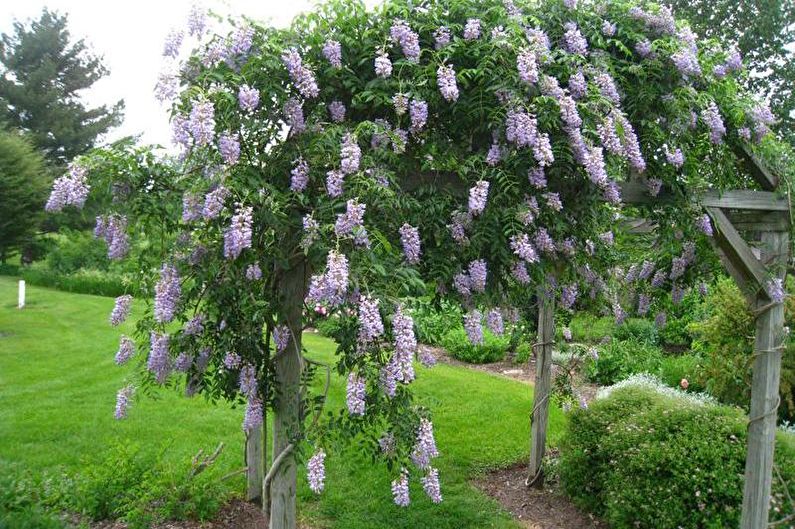
Wisteria Care
The fragrant cascade of wisteria is, as a rule, the result of the joint work of nature and man. Especially careful plant care is necessary in a cool climate. Adult, partially woody vines can tolerate frosts, temporary drought or long periods of slush much better, but young seedlings require a sensitive and attentive attitude at all stages of their development.
Light and warm
Since the subtropical tropical forests of Asia are the natural habitat of these lush flowering vines, these plants have a difficult time under long winter conditions. In order for wisteria to form as many buds as possible, it should be placed on the south side of the site or house, protecting from wind and drafts. Despite the frost resistance of popular species, it is not worth testing the plant for strength - perennials for the winter should be covered with peat, straw, burlap, and one-, two-year-old seedlings after pruning can be dug up with an earthen lump and temporarily stored in a room at + 8-10 ° C.
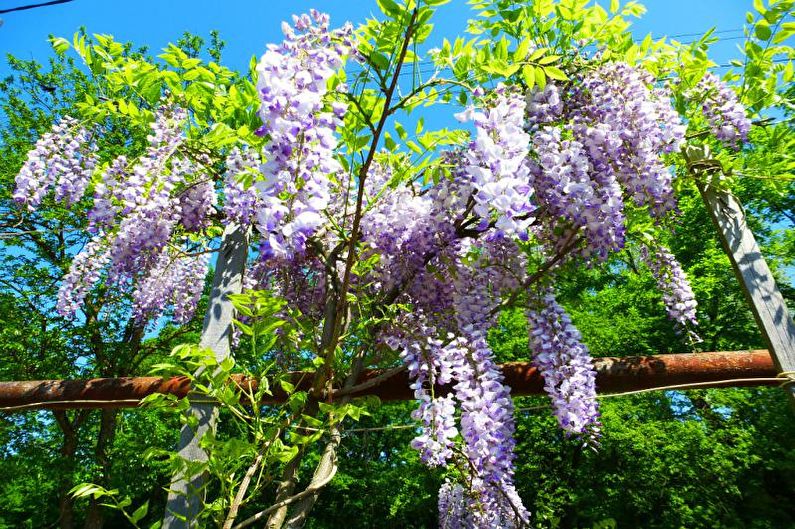
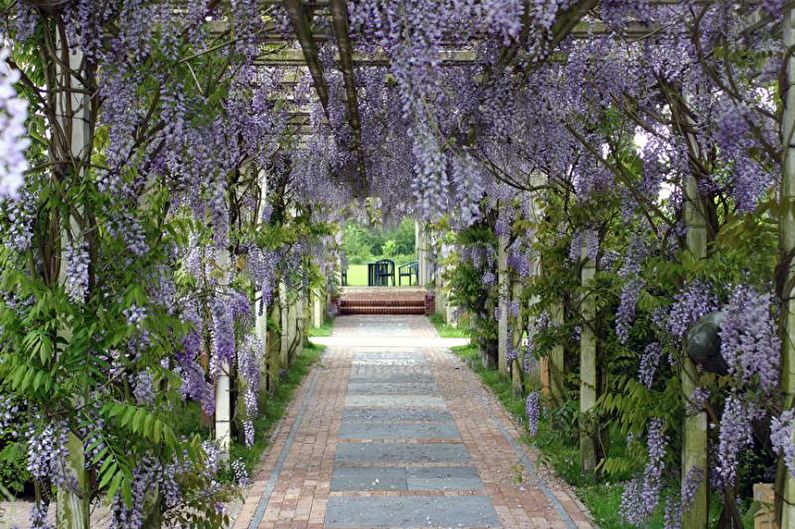
Watering
Watering wisteria is needed moderate, without waterlogging. Excess water, especially in cold weather, negatively affects the root system, which can begin to rot. High-quality drainage and loose, rich in organic soil soil will help to avoid this.
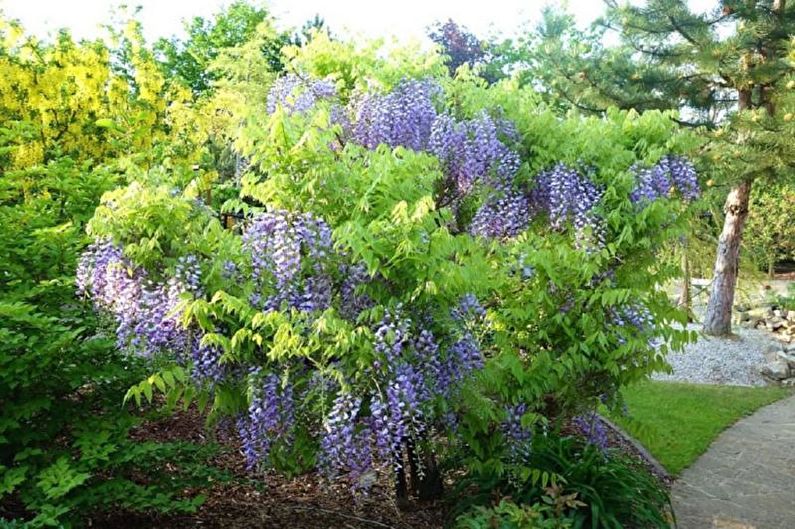
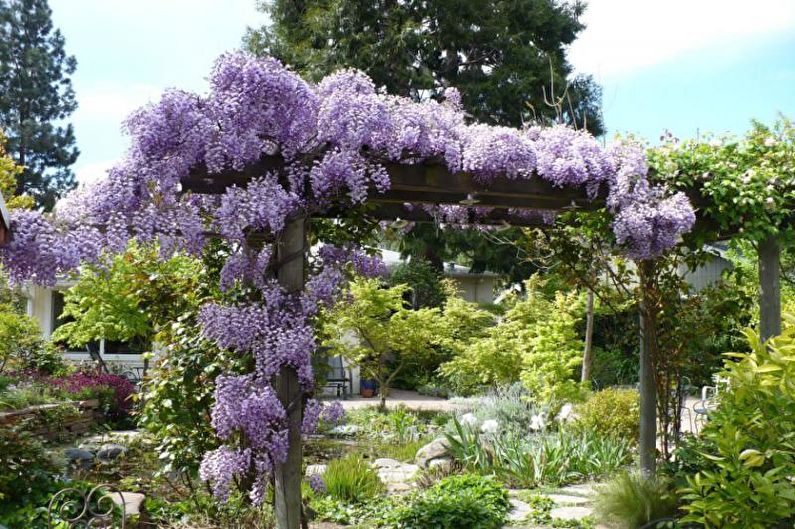
The soil
Soil for decorative liana is suitable for deciduous-turf, with a small admixture of river sand. A good option is chernozem and loamy substrates enriched with peat, manure or compost. To reduce acidity, the earth is watered once a season with an aqueous solution of ordinary chalk.

Pruning
Wisteria is trimmed as necessary to form branches, but on the whole it is recommended to do this twice: after the completion of the main flowering cycle (June - July), shortening young shoots by about 2/3, and also in November to prepare the plant for winter. To increase the number of flowering clusters, in the spring the central vine is cut, after which more lateral processes are formed.
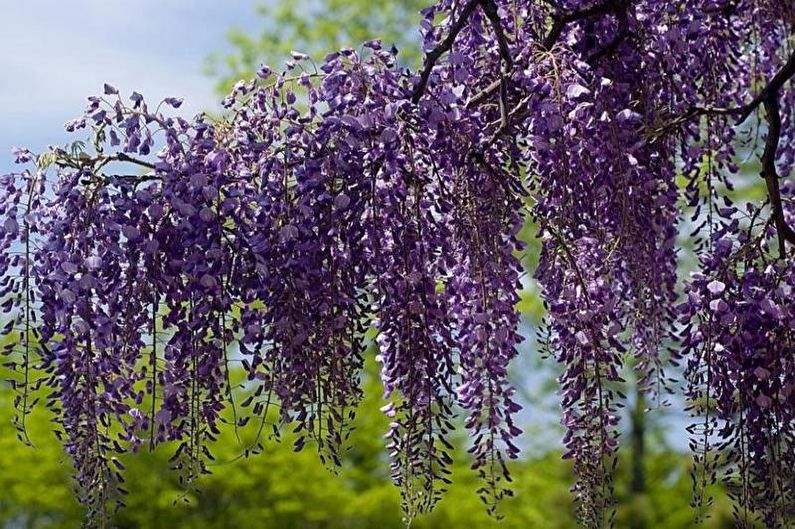
Wisteria propagation
Despite the fact that wisteria forms many pods with seeds every year, it is recommended to plant it in a vegetative way. Cuttings, rooting of layering or young shoots allows in a year or two to get an adult tree with beautiful flowering flowers. At the same time, a young liana from seeds blooms not earlier than after 5, or even 10 years, while the varietal characteristics of the mother plant are not preserved.
Cuttings - This is, in fact, the cultivation of new seedlings from fragments of branches. In late autumn, but always before the first frost, young shoots are cut into pieces 40–50 cm long, installed vertically in a container and filled up by about 1/4 with a moistened substrate. Then they are left in the basement until spring. In February - March, cuttings are transplanted into the greenhouse or on the windowsill under a transparent cap (plastic bottles are suitable), providing them with good lighting, warmth, regular watering and top dressing with growth stimulants. When the weather is warm outside, young sprouts are transplanted into the open ground.
Rooting layering It is carried out in the fall, when preparing the plant for winter rest. To do this, the lower branches, which did not have time to wood, bend and dig into the ground to a depth of 10-15 cm. In the spring, after the leaves appear on the layers, they are cut from the mother plant and left for a year to form roots. In the early autumn of the same year or next spring, young seedlings can be transferred to a permanent place.
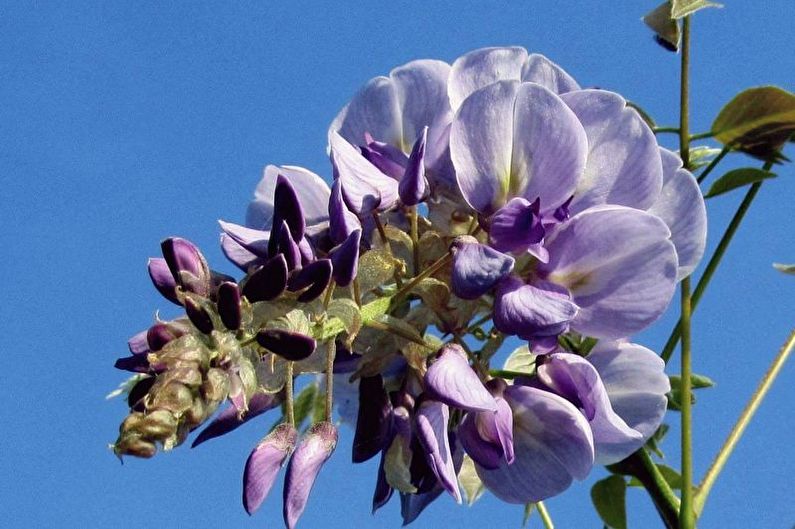
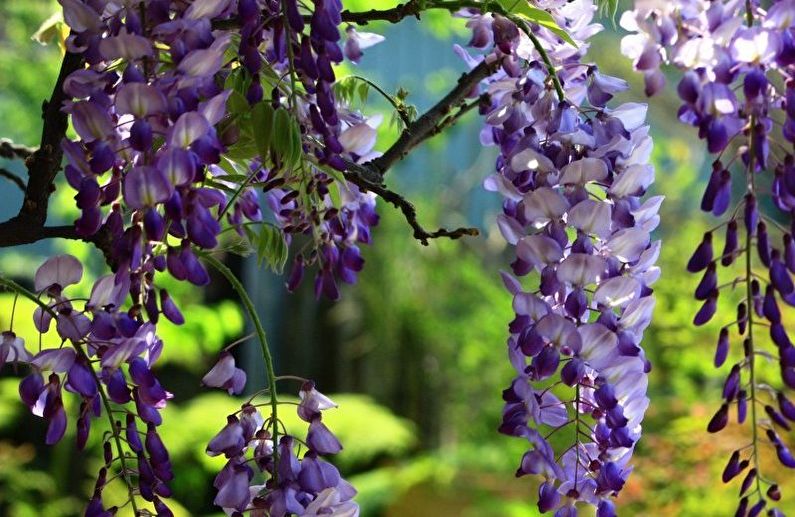
Wisteria - photo
If you provide comfortable thermophilic wisteria, it will delight everyone around with a delightful floral "rain" for many years. We offer you to decorate a personal plot or a country house with a worthy decoration, photos of which we have collected in our selection. Enjoy watching!
